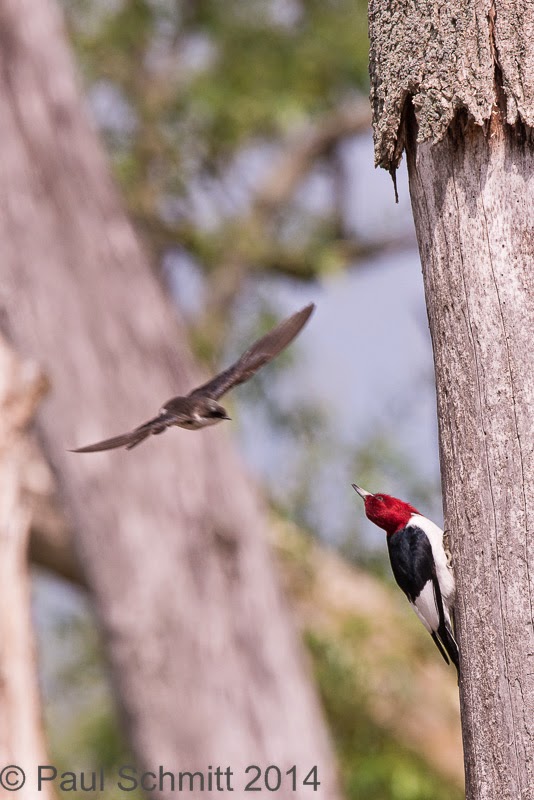For the second year, a pair of Red-headed Woodpeckers are nesting in Montezuma National Wildlife Refuge in close proximity to a road. This is very special; they're uncommon in New York and to be nesting in plain sight is equally unusual. They are not showing any concern with people being present, nor the light traffic on the road.
On a recent trip there, they were still excavating the cavity in a dead tree. They are a striking bird with amazing red color on the heads. Direct sunshine makes them nearly glow.
The birds are identical and seem to share the task of preparing the cavity. After a seemingly long time in the cavity, the bird will shift to removing the wood chips from the cavity. It appears at the opening with a beak full of wood "dust".
Wham! There goes a cloud of "dust" into the wind. Some of it ends up clinging to the dead bark, and the rest drifts away. The bird disappears down the hole for another load.
Now, these cavities are prized by a number of other birds seeking a nesting spot, so there can be conflicts. I saw one such episode where the woodpecker was protecting the cavity from the much smaller Tree Swallow.
In this case, the swallows quickly abandoned the plan. Starlings have also been seen trying this with a more serious conflict resulting.
One of my goals has been to capture the birds in flight at the nest. They are very fast when flying, but after many attempts I finally got one leaving the nest to the care of its partner.
I'll be continuing my attention at this nest and hope the pair is again successful in raising young this year.















